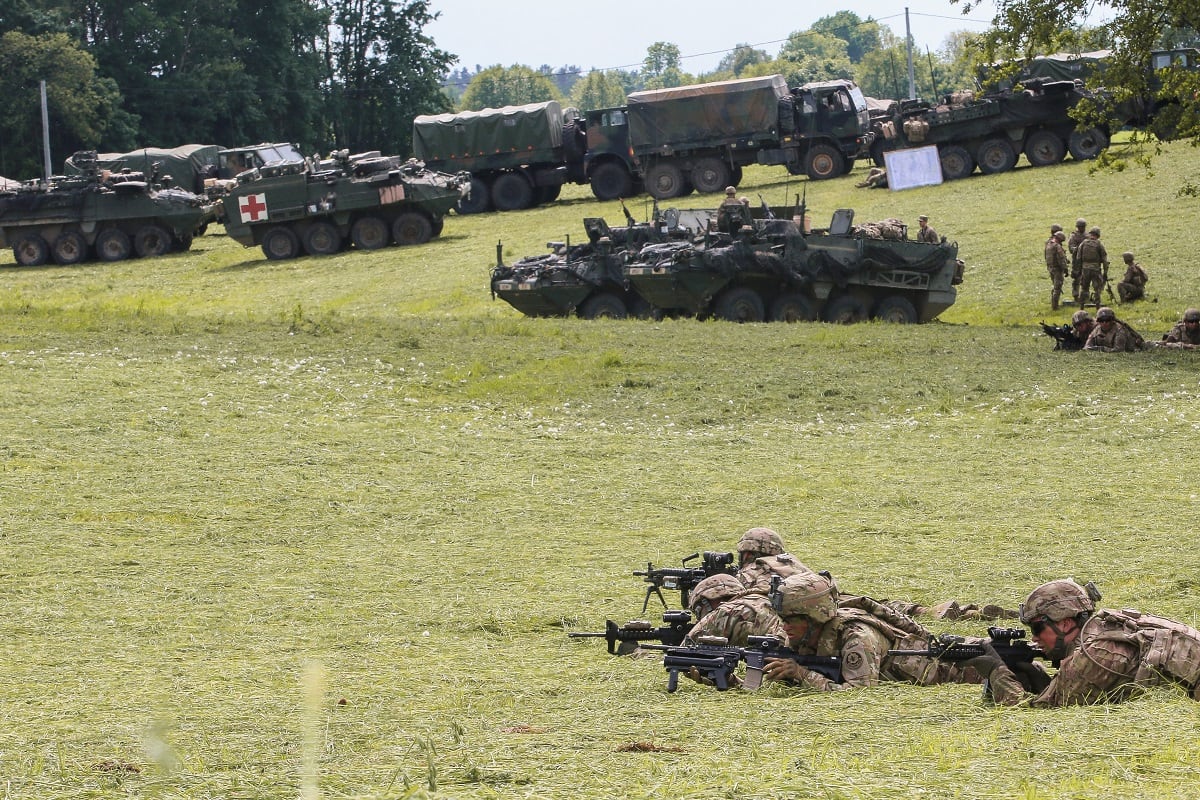Nowadays, identifying global security trends is a tricky business. Every day we convince ourselves how the unpredictable becomes reality. The complexity of the modern world and its various aspects — multidimensionality of the security environment, the volatile behavior of some state and nonstate actors, continuous development of new technologies, hybrid warfare threats, and social dynamics to name but a few — do not absolve us from responsibility to get prepared for any scenario we may face in the future.
In 2019 we will celebrate the 20th anniversary of Poland’s accession to the North Atlantic Treaty Organization. Looking back over this period and over the post-Cold War era in general, we clearly see how the prevailing belief that we had lived in a mostly undisturbed world — and taken advantage of the peace dividend — simply perished. The illegal and illegitimate Russian annexation of Crimea, followed by politics of fait accompli, has completely changed the European security landscape.
This is one of the main reasons why the trans-Atlantic community does its best to strengthen NATO as a whole and each of its members separately. The historic decisions taken at NATO summits in Newport, Warsaw and Brussels, complemented by the 360-degree approach, paved the way for the NATO adaptation to the security challenges coming both from the east and the south. The deployment of four multinational, battalion-size battlegroups in Poland and the three Baltic states, known as the enhanced Forward Presence as well as the tailored Forward Presence in the Black Sea region, continues to be a visible demonstration of allied solidarity and common contribution to deterrence and defense on the eastern flank. But further military adaptation of NATO is necessary.
The Readiness Initiative, enhancement of the Follow-On Forces and building capabilities to counter the Russian A2/AD systems will contribute to this process.
In the coming year we intend to keep up all initiated projects and embark upon new endeavors aimed at making an influential contribution to the trans-Atlantic security and the cohesion of the Western community.
As a reliable ally, Poland makes substantial investments to strengthen its potential. We have decided to form a fourth division east of the Vistula river. The whole process will take approximately three years with the perspective of the division’s full operational capability in spring 2021. We will continue to develop the Territorial Defence Forces as the fifth service of the Polish Armed Forces with its 17 brigades spread across each Polish province. We also continue designating significant financial resources for military modernization. Bearing in mind that modern warfare has its specific characteristics of the technology-driven era, our expenditures are focused on key capabilities such as air and missile defence, modern artillery, aviation, C4ISR, or cyber.
Taking into account the investment in military and civilian infrastructure, Poland aspires to serve as a hub for NATO forces in the part of Europe that remains the center of gravity for our potential peer-state adversary. All these efforts conjoined with increased defense spending (currently 2 percent of gross domestic product with a prospect of its gradual augmentation to 2.5 percent in 2030) will eventually lead to our more robust defense posture as well as enhancing NATO's collective defense and deterrence on the eastern front.
RELATED

In December 2018, the Multinational Division North East located in Elbląg reached its full operational capability during the Anakonda 18 exercise. We are proud that this ambitious and challenging project, which originated from the decisions of the Warsaw NATO Summit, has been completed successfully. The effort of all contributing nations is the best confirmation of our determination and solidarity.
We hope to welcome soon an increased U.S. military presence in Poland that will bring an added value for all allies. We perceive the Polish-American strategic partnership, particularly its security and defense dimension, as an important component of the trans-Atlantic community. Common Polish and American endeavours reinforce the overall Euro-Atlantic security and attempt to better close the gaps of the NATO reinforcement and deterrence strategy.
We also continue to stay engaged in various European Union defense-related initiatives and projects with the constant aim to strengthening the European arm of the trans-Atlantic alliance.
Given the global nature of security challenges and the turmoil in the vicinity of Europe that may have far-reaching consequences, Poland has decided to return to U.N.-led peacekeeping missions. As President Andrzej Duda announced in New York in September 2018, we stand ready to send a mechanised military unit to join a U.N. mission in the Middle East in 2019.
On the eve of 2019 we embark on a path to translating all these declarations and plans into advantageous projects, increasing our potential and deepening defense cooperation with our allies and partners. Only constant effort on the national- and collective defense-level will allow us to face the full spectrum of threats and challenges: from hybrid to high-intensity, if we were compelled by circumstances.
Mariusz Błaszczak is Poland’s defense minister.








